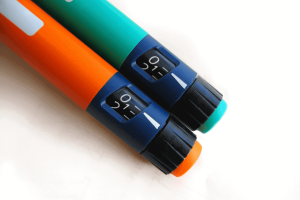Shoe Shopping 101: Tips for Buying Diabetes-Friendly Footwear
Many people with diabetes are at risk for developing poor blood circulation, especially in their feet. A good pair of diabetes-friendly shoes can help you prevent injury and promote foot health. Here are a few tips on how you can find a new pair of kicks that work best for your feet.
First, it’s important to make sure you would benefit from diabetes-friendly footwear. The Joslin Diabetes Center says people who have blood sugar under control and who haven’t experienced numbness or tingling in their feet don’t necessarily need medial shoes. Remember to talk to your doctor before you make any therapeutic footwear purchases.
Make sure you begin shopping in the late afternoon–this is the time when your feet will be the most swollen. Shopping malls can be great for buying an easy pair of sandals or new pumps for special occasions, but the staff in these stores usually isn’t trained to help people with medical needs. To get the best footwear recommendations, visit a podiatrist, or doctor who specializes in taking care of feet. These physicians are trained to determine what kind of shoe would benefit your feet. They can even make sizing recommendations to help save you time in the store.
When browsing the sales racks, make sure you choose comfort before fashion. While you probably won’t find models showing off the latest therapeutic footwear in the pages of Vogue, remember that your health is more important that being trendy. When in doubt, stick to the basics. Shoes with extra buckles and high heels can rub your feet the wrong way, causing cuts, blisters, or swelling. According to WebMD, diabetes-friendly shoes should have a thick, hard sole to protect your foot from any sharp objects. The shoe should also cover your entire foot to keep you safe from debris. Finally, look for shoes that have adjustable closures, such as laces or Velcro. This will help you adjust how the shoe fits when the swelling in your foot increases and decreases.
One of the most important parts of buying a good pair of shoes is making sure they fit properly. The experts at WebMD say a pair of diabetes-friendly shoes should give you plenty of room around your toes to promote circulation. The footbed should also feel roomy, leaving room for your feet to breathe when they swell. Shoes with a little extra padding can provide a comfy cushion for your foot, taking the pressure off the soles of your feet when you walk.
Finally, keep in mind that shoes don’t last forever. To keep your feet healthy, it’s important to replace your shoes when they wear down or break. The Joslin Diabetes Center recommends buying new shoes when the heels of your old ones wear down, when the inner lining is ripped, or when the middle portion of your shoe feels worn down and doesn’t support your foot any more. All this shopping and research may take a little extra work, but investing in solid footwear can help save your feet from extra pain and problems later.





Hmm it seems like your blog ate my first comment (it was super long) so I guess I’ll just sum it up what I had written and say, I’m thoroughly enjoying your blog. I as well am an aspiring blog blogger but I’m still new to the whole thing. Do you have any helpful hints for newbie blog writers? I’d really appreciate it.
Hello! Quick question that’s completely off topic. Do
you know how to make your site mobile friendly?
My website looks weird when viewing from my apple iphone.
I’m trying to find a template or plugin that might be able to fix this problem.
If you have any suggestions, please share. Thanks!